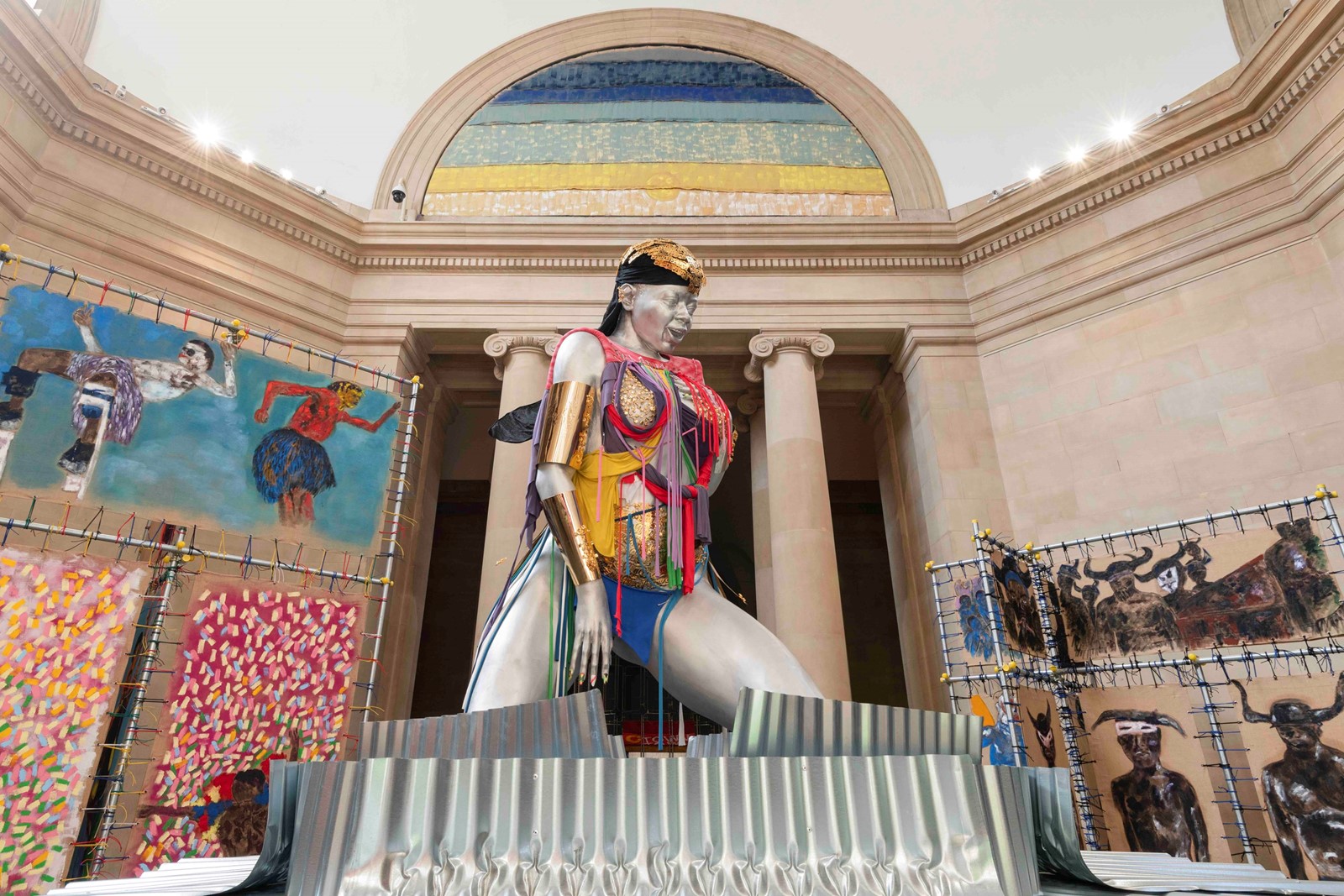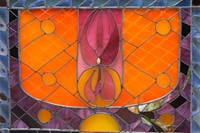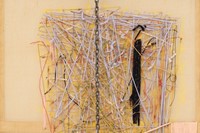Art historian, curator and writer Alayo Akinkugbe is behind the popular Instagram page A Black History of Art, which highlights overlooked Black artists, sitters, curators and thinkers, past and present. In a new column for AnOthermag.com titled Black Gazes, Akinkugbe examines a spectrum of Black perspectives from across artistic disciplines and throughout art history, asking: how do Black artists see and respond to the world around them?
London-based painter Alvaro Barrington is known for his mixed-media works, which often combine contrasting materials: concrete painted onto luxury goods, cardboard and corrugated iron. His new installation, Grace at Tate Britain is an ode to his grandmother, sister and mother, and in his words, speaks to how, “[for] Black people, there’s a general emotional incentive to be graceful.”
The audience moves between an installation inspired by his grandmother’s home in hurricane season, with the sound of rain accompanied by the musical compositions of Devonté Hynes (of Blood Orange) and Olukemi Lijadu, among others, and an enormous sculpture of Barrington’s sister dancing, inspired by a memory of Notting Hill Carnival. The final section is a quiet, contemplative space with church pews overlaid with his drawings.
Barrington’s Grace is monumental, nostalgic and charged with a sense of intimacy. He drew inspiration from a range of sources, including Botticelli’s Birth of Venus, Ghostface Killah’s song All That I Got Is You, Tracey Emin’s famous artwork Everyone I Have Ever Slept With 1963–1995, and his mentor Nari Ward’s installation Amazing Grace.
Below, Alvaro Barrington talks AnOther through Grace.
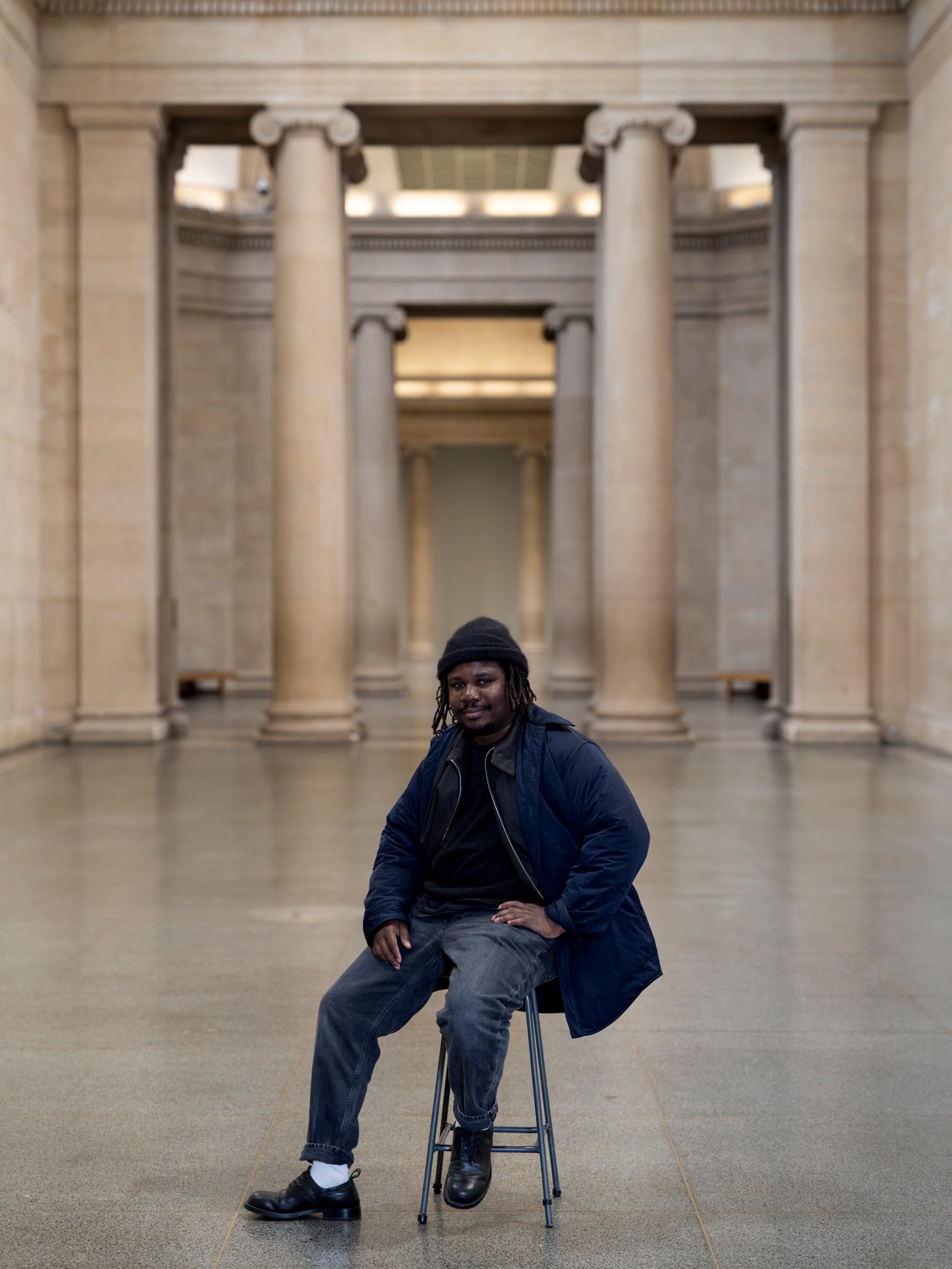
Alayo Akinkugbe: How did you come to the title of this commission, Grace?
Alvaro Barrington: There were a couple of different touch points. One was one of my professors [at Hunter College], Nari Ward’s incredible installation called Amazing Grace. The installation was extremely profound and he was playing the song Amazing Grace, which made me think about how, [for] Black people, there’s a general emotional incentive to be graceful.
Grace isn’t “my life is perfect, I’ve never experienced anything, and I just show up looking beautiful.” Grace is my mama being 17 years old, coming to my grandma, and being like, “Mum, I’m pregnant.” And she goes, “You’re beautiful, you’re amazing. Let me take my grandson because you’re not ready to take care of a kid. And I’m not going to make you feel ashamed of having gotten pregnant and I’m not going to make you feel ashamed of any of the things that you’re experiencing. I got you.”
AA: Who inspired the monumental sculpture of a woman dancing in a durag and gold jewellery, at the centre of this exhibition?
AB: I went to Florence and saw Botticelli’s Venus, and it was really interesting to see her covering herself. Then I thought about the history of Venus, and she always comes out of the ocean in shame, covering her body. Then I had this memory of my sister Samantha dancing at Notting Hill Carnival. And I was like, oh, here’s this public space, that two million people understand is her space. And I was like, wow, this is the space that the Black community has decided, as a public space, is your space.
I just had this image of Sam, [and I told her] “I have this idea that you are the embodiment of. I just want to make a sculpture that you feel is how I see you.” And I think she becomes the complete opposite of Venus. [Instead of] here’s my body in shame, it’s like, here’s my body, I’m proud.”
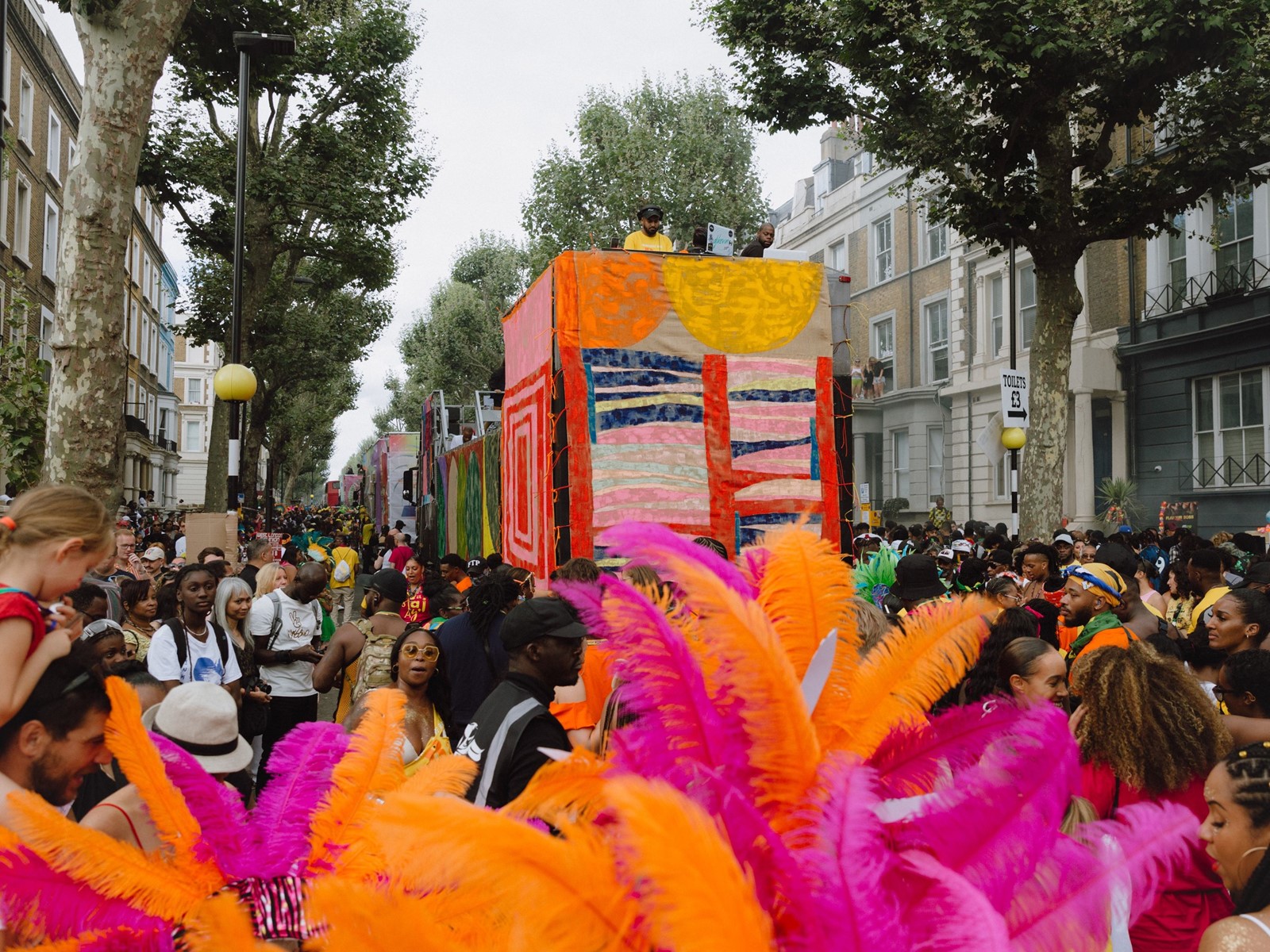
AA: Does this commission feel like an intervention in Tate Britain, or did you want to lean into its architecture?
AB: One of the privileges of my life is that I grew up in a community where we thought we were the centre of the universe; Brooklyn when hip-hop was taking off, when Sean Paul and that reggae scene [were] taking off. So I never really think about intervention, because we [are] the centre of my own world. I just show up. But I would also say this is the difference between being a Black American and a Caribbean American. [I] grew up as a majority. Everybody in [my] community looked like [me] – doctors, lawyers etc.
AA: You often include luxury goods like Hermès blankets or strips of Bottega Veneta intrecciato leather, overlaid with contrasting materials such as cement. Why do you juxtapose these materials?
AB: Growing up, you’re always aware that things have meaning. To bring it to fashion, you know that those jeans are different from those jeans; them Guess jeans ain’t those Lee Jeans. So I was always aware that emotionally, people approach things with a cultural understanding. Painting with cement is about how, if you grew up in the streets, that was how you could tag your name in things.
AA: Where did you draw your influences from, for this exhibition?
AB: For this particular exhibition, it was Ghostface Killah’s All That I Got Is You, which I have tattooed on my hand. Ghost did me the honour of performing it for me at an opening I had in LA, and he doesn’t [usually] perform that song because it’s so personal. So I was like, let me just do something so deeply personal.
Yesterday I was walking, listening to the song and crying. I had to pause in the middle of Brick Lane, cross the street and give myself five minutes to let that song play out in my imagination. That’s the North Star.
“One of the privileges of my life is that I grew up in a community where we thought we were the centre of the universe” – Alvaro Barrington
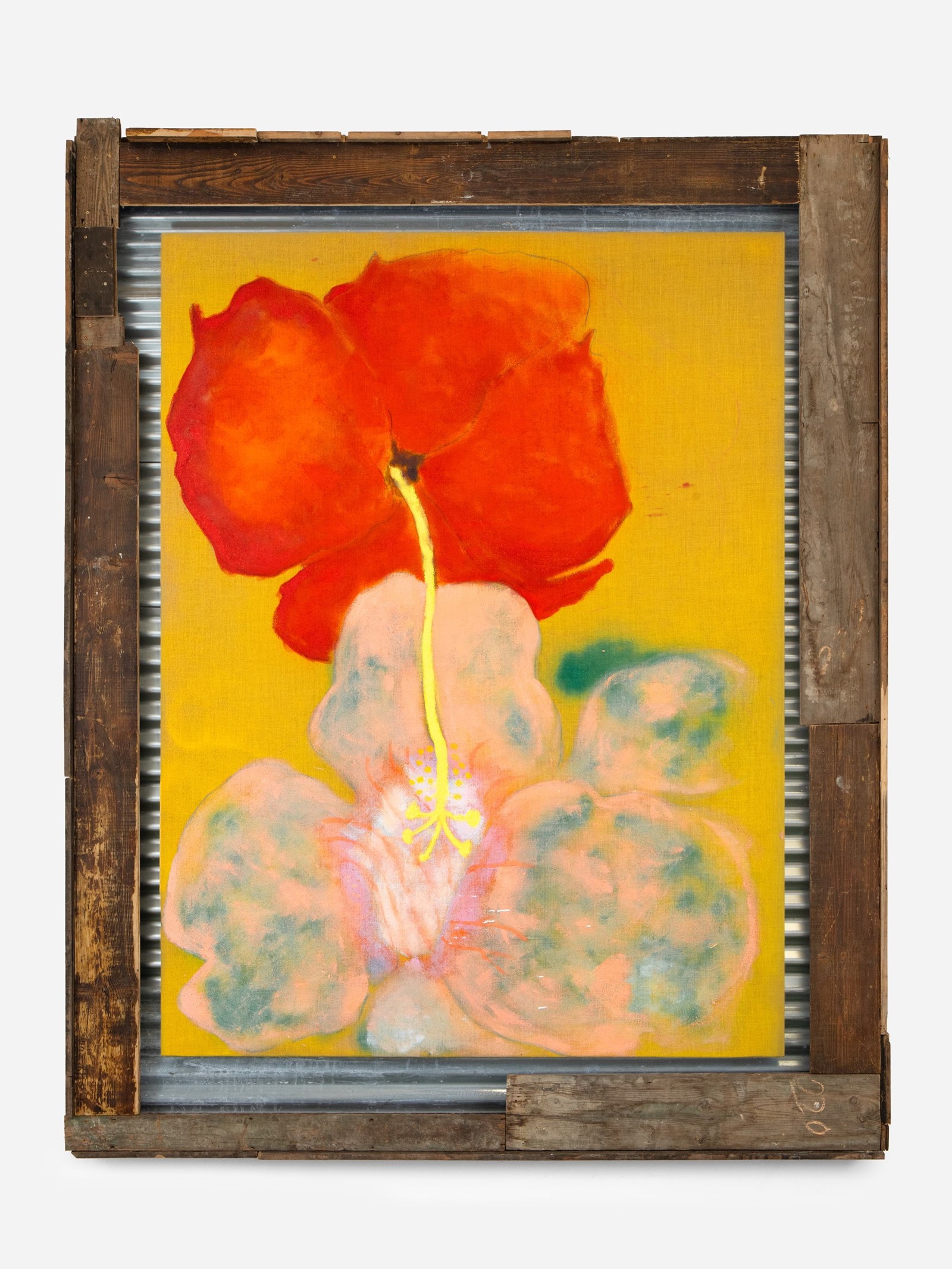
AA: Painting is consistent in much of your work, even if combined with different media. Have you painted throughout your life?
AB: When my mama died, a lot of the people who took me in, [such as my] aunts, ain’t really know how to deal with me. If I was drawing in a corner, they felt I was doing something productive, and knew to leave me alone. Especially because they knew I was out in the streets five minutes ago. So they just always left me alone and let me do that as my intellectual safe space.
AA: And that safe space ended up being your career.
AB: Yeah. I went travelling at some point and everywhere [I went], I ended up hanging out with artists. Growing up in New York, I had the same friends through every period of my life, I didn’t know if I was doing things because that’s me, or because that’s what me and the homies always do. Then when I was backpacking, it felt like I was actively choosing this. But I didn’t know what it meant, so when I [went to] Hunter College I met Nari and a bunch of other artists and they showed me their lifestyle, and I was like, “That makes sense, let’s go”.
Grace by Alvaro Barrington is on show at Tate Britain in London until 26 January 2025.
